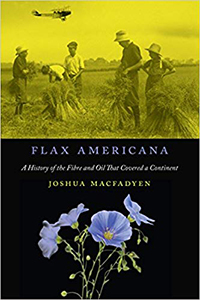Published On: October 31, 2018
“Farmers feed cities, but starting in the nineteenth century they painted them too. Flax from Canada and the northern United States produced fibre for textiles and linseed oil for paint – critical commodities in a century when wars were fought over fibre and when increased urbanization demanded expanded paint markets. Flax Americana re-examines the changing relationships between farmers, urban consumers, and the land through a narrative of Canada's first and most important industrial crop. Initially a specialty crop grown by Mennonites and other communities on contracts for small-town mill complexes, flax became big business in the late nineteenth century as multinational linseed oil companies quickly displaced rural mills. Flax cultivation spread across the northern plains and prairies, particularly along the edges of dryland settlement, and then into similar ecosystems in South America's Pampas. Joshua MacFadyen's detailed examination of archival records reveals the complexity of a global commodity and its impact on the eastern Great Lakes and northern Great Plains. He demonstrates how international networks of scientists, businesses, and regulators attempted to predict and control the crop's frontier geography, how evolving consumer concerns about product quality and safety shaped the market and its regulations, and how the nature of each region encouraged some forms of business and limited others. The northern flax industry emerged because of border-crossing communities. By following the plant across countries and over time Flax Americana sheds new light on the ways that commodities, frontiers, and industrial capitalism shaped the modern world.”


